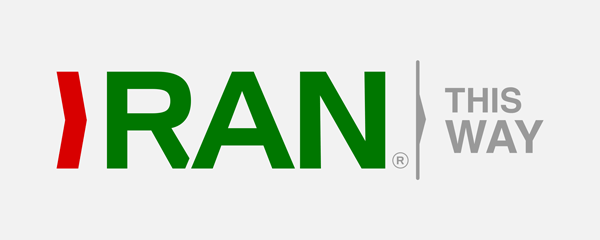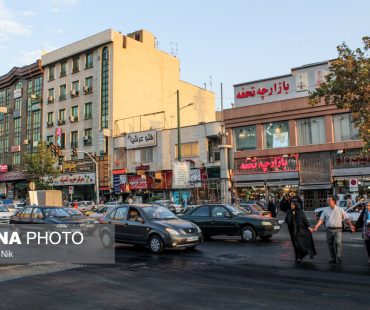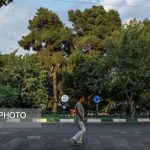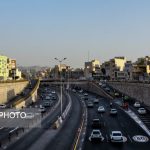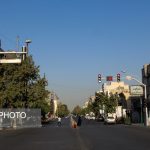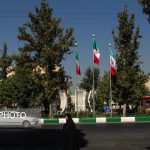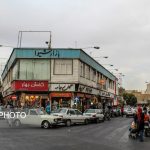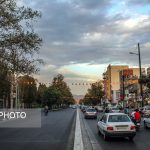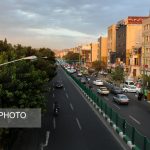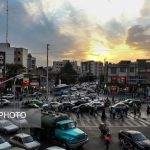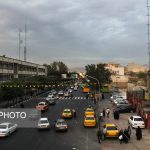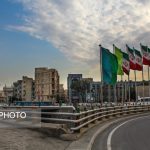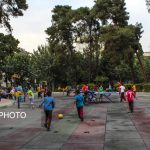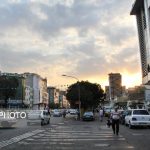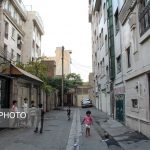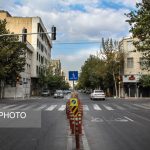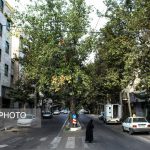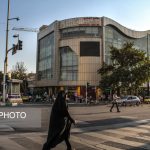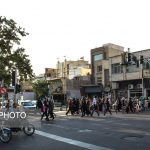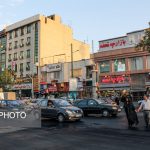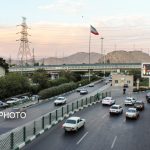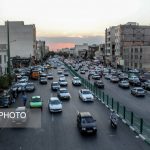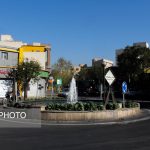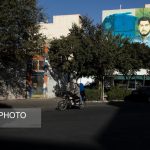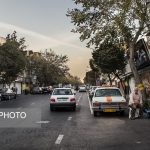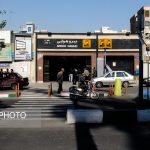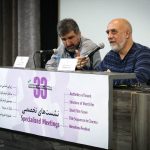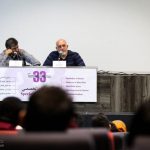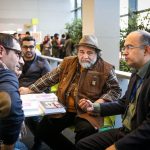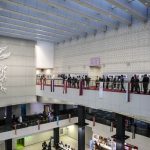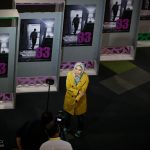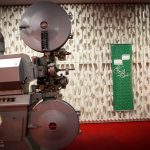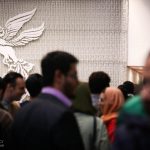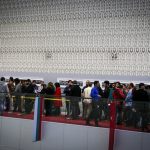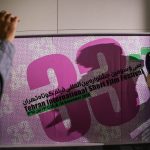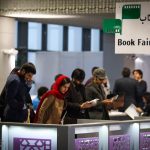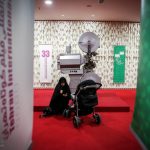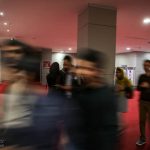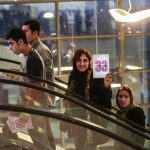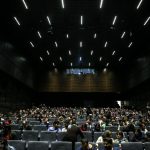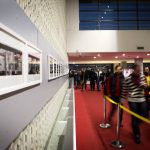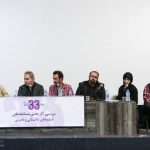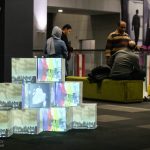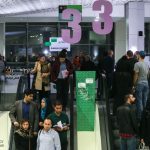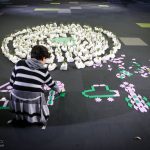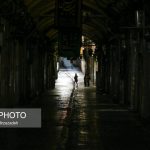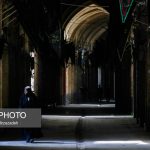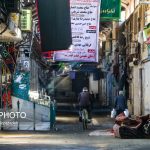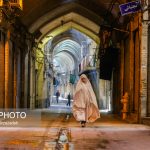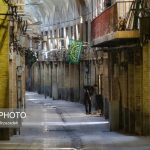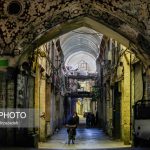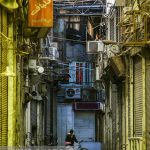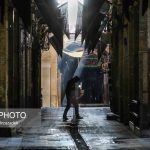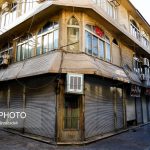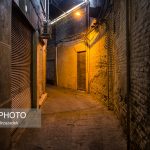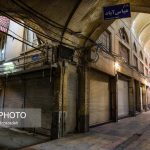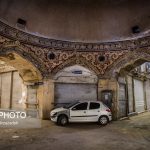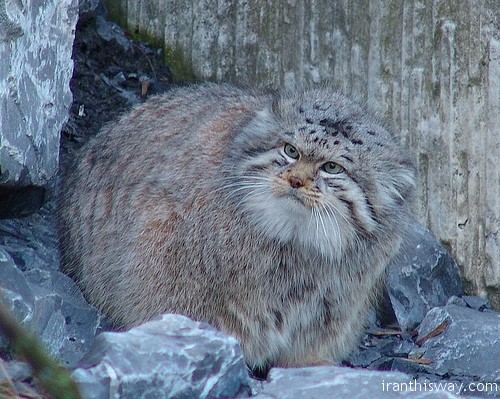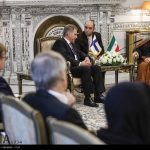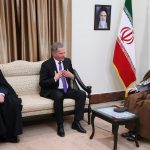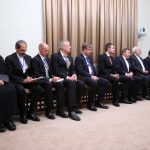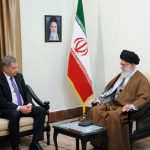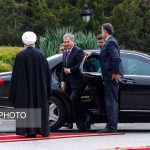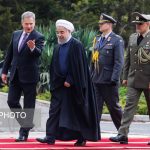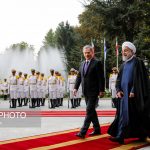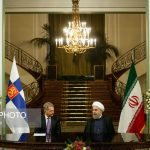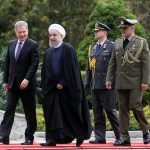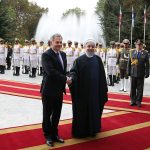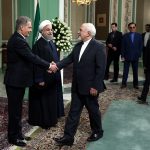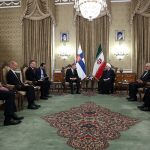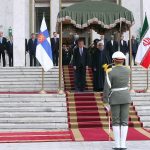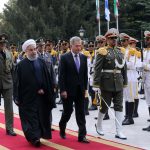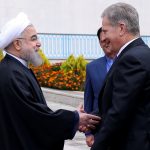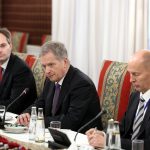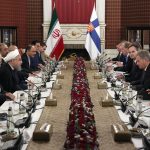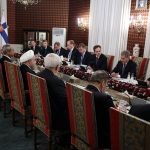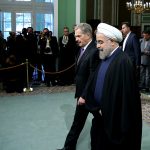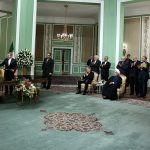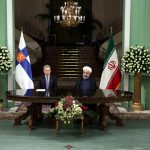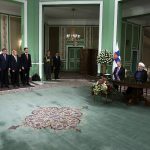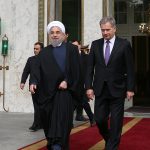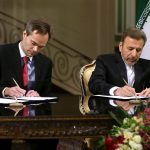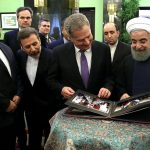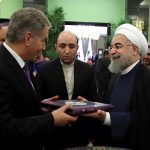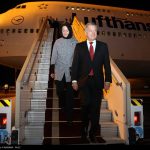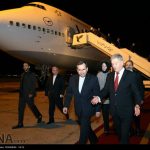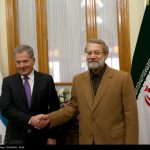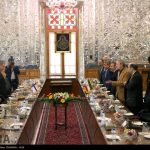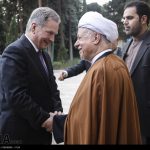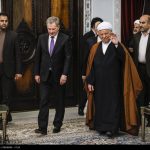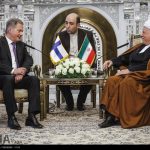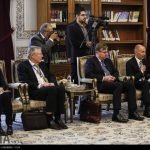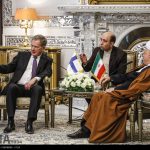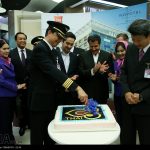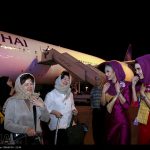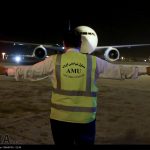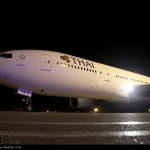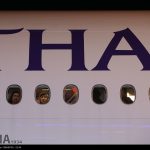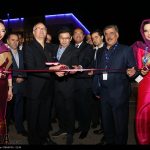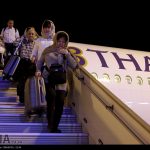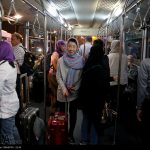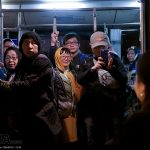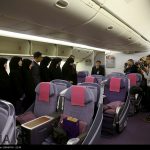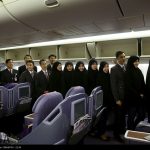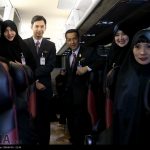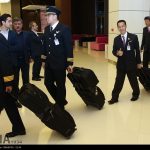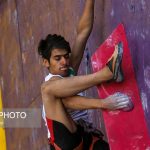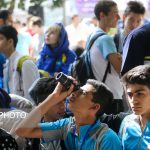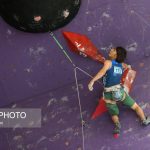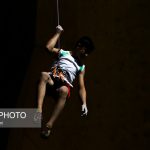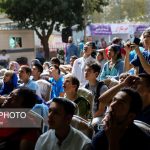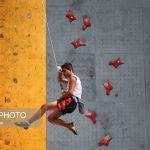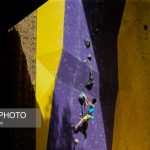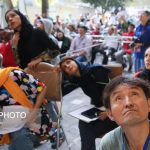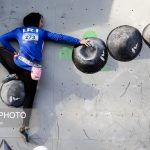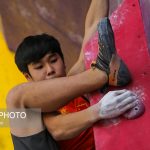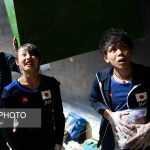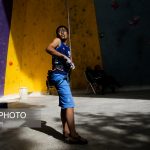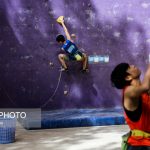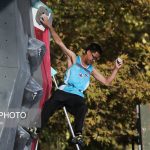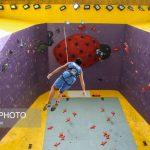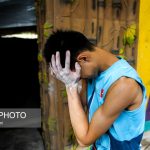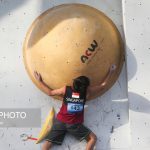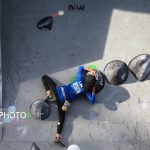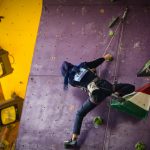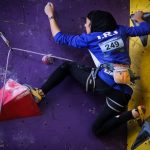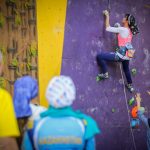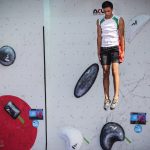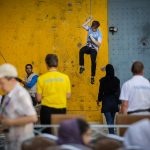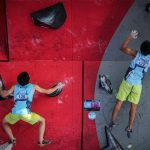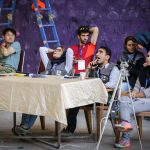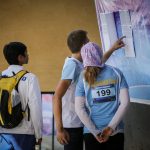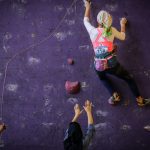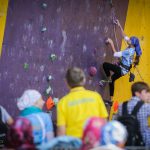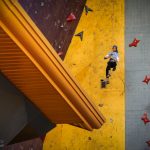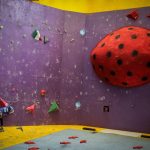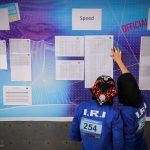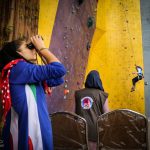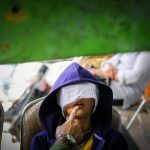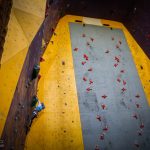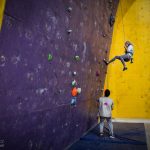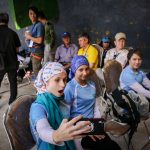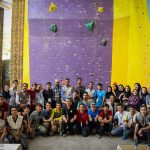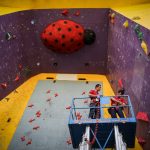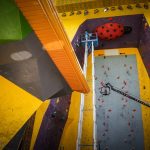Pirouzi district is one the main neighborhoods of Tehran. Pirouzi district located in east of Tehran.
Photo: Tehran Intl. Short Film Festival
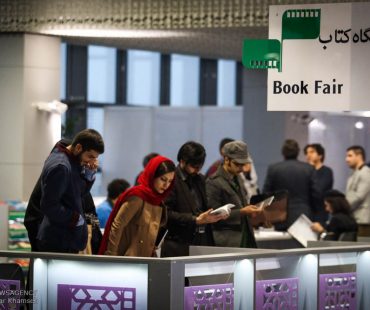
The 33rd Tehran International Short Film Festival (TISFF) is underway in Charsu Sineplex.
Charsou Cineplex is currently hosting the 33rd Tehran International Short Film Festival (TISFF) from 8-14 November, 2016.
The festival director is Farid Farkhondehkish and the poster features the late Iranian director Abbas Kiarostami.
Jury members for the international section include Khosro Sinai from Iran, Julliette Duret from Belgium, Anna Henckel from Germany, Shubhra Gupta from India, and Jukka Pekka Lakso from Finland.
The festival hosts 25 foreign guests from Colombia, Turkey, Iraq, Germany, Finland, Belgium, India, Tajikistan, Austria, Switzerland, Poland and Japan.
Iranian Youth Cinema Society (IYCS) organizes Tehran International Short Film Festival (TISFF) annually in Autumn. It is one of the oldest film festivals not only in Iran but also in the region. The festival has been the host of the International well-known festival directors and cineastes from around the world. In 2014 the festival had received almost 3000 films from 104 countries and in 2015 it reached to 3601 films from 108 countries around the world.
Photo: Tehran bazaar on holiday
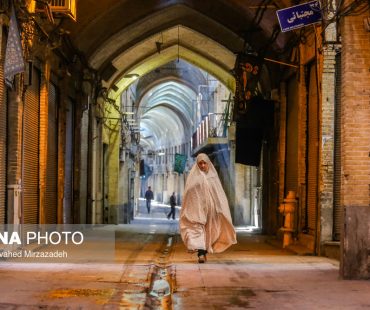
Tehran super busy traditional market is closed on Friday holiday.
The maze of bustling alleys and the bazaris (shopkeepers) that fill them make a fascinating, if somewhat daunting, place to explore. Traders have been hawking their wares on this site for nearly 1000 years, but most of what you see today is less than 200 years old and is no architectural jewel. The bazaris are a conservative bunch and there will be far more chadors than bleached hair here.
The bazaar’s covered stores line more than 10km of lanes and there are several entrances, but it’s worth using the main entrance, in a square opposite Bank Melli. The warren of people and goods is a city within a city and includes guesthouses, banks, a church, a fire station and several mosques, most notably the big, busy but relatively unadorned Imam Khomeini Mosque, which is a good place to quietly watch Islam in action. Most lanes specialise in a particular commodity: copper, paper, gold, spices and carpets, among others.
You’ll also find tobacconists, shoemakers, tailors, broadcloth sellers, bookbinders, flag sellers, haberdashers, saddlers, tinsmiths, knife-makers and carpenters. The carpet, nut and spice bazaars might be the most photogenic, but the lane of stores selling fake designer labels (literally labels, not clothes) also catches the eye.
In our experience there are two ways to visit the bazaar, a place that cartographers seem never to have fully conquered. One is to simply wander the labyrinth of streets and alleys, taking whichever direction you fancy and just going with the flow. You’ll almost certainly get lost but will soon enough be found by a helpful local; remember to walk uphill to the main exit.
The other is to allow yourself to be befriended by one of the carpet salesmen. Tell them what sections of the bazaar you’d like to see (the gold bazaar, spices bazaar, the mosque etc), and they will lead you. When you’re done, they will expect you to visit their carpet shop, drink some tea and view a few rugs – which in itself is quite fun (carpet prices here are probably the best in Iran).
Try and visit in the morning, when business is brisk but not yet frantic, as it becomes at lunchtime when the chance of being run over by a piece of fast-moving haulage equipment is high. /lonely planet
Tehran, Tokyo begin special coop. on emergency situations
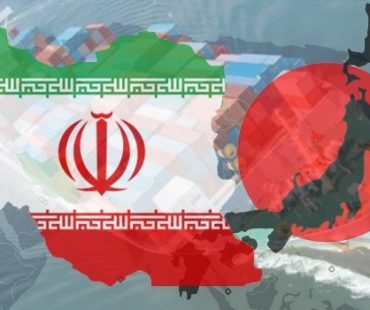
Iran and Japan have launched a fresh round of combined effort aiming to supply water and electricity to the Iranian capital of Tehran in case of an earthquake.
Speaking on the sidelines of a meeting with deputy head of Japan Cooperation Center for the Middle East (JCCME), Iranian Deputy Minister of Energy Sattar Mahmoudi pointed to the need for development of Iran-Japan ties in water, electricity and energy sectors saying “these collaborations can be pursued in a variety of areas like new energies, solar and thermal energy, reduction of power losses as well as consumption management and energy efficiency.
Mahmoudi deemed Japan as one of Iran’s best partners in water and electricity industries asserting “grounds have been provided for cooperation between the two sides and collaborations will be sustained.”
The Iranian official recalled that Iran’s Energy Ministry has always had extensive synergy with Japanese organizations an excellent joint ventures have been carried out; “JCCME has previously held effective workshops for Iran’s private sector and the current meeting will lead to stronger future ties.”
“Training courses of JCCME have proved fruitful to Iranian specialists and the participation of 280 experts in water and power areas has been convincing,” stressed the official adding “JCCME can open a representative office in Tehran as a means of further deepening the ties and taking more serious steps by defining targets.”
He further enumerated venues for cooperation between the two countries including scientific, educational, research and infrastructure creation areas reiterating “great potentials exist in these arenas in which joint action can be manifested through holding training workshop and forming research teams no to mention technical and operational fields.”
Mahmoudi went on to express readiness of Iran’s Energy Ministry to launch partnership with the Japanese center in areas of water resources management, river management, urban water supply, water and sewage treatment as well as reduction of No-Revenue Water (NRW).
JCCME deputy head, for his part, noted that a bureau of the Japanese center will begin operation in Tehran in the year to come; “we hope to have stringer relations with Iranian experts and extend existing venues for cooperation from water to other sectors like electricity or energy.”
Water consumption is very high in Tehran and the Iranian capital has a high risk of having earthquakes, said the official noting “as a means of joint effort, JCCME will spare no effort to make sure people will have access to water and electricity in at the time of earthquake.”
Russian Railways set up representative office in Tehran
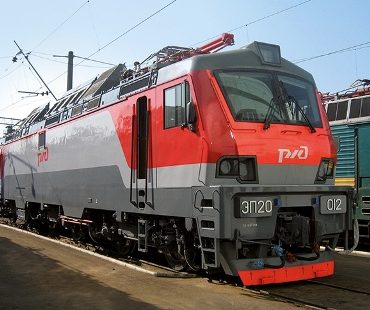
Representative of Russian Railways said the transportation company is seeking to set up a representative office in Iran.
Head of the International Cooperation Department at JSC Russian Railways Sergei Stolyarov made the remarks during a speech delivered at the eighth meeting of the Working Group on Iran-Russia cooperation and pointed to the international project pursued by the state-owned railway monopoly Russian Railways (RZD Holding) asserting “a total of 117 subsidiaries are members of the holding which encompasses 25 per cent of total investments made in Russia.”
Stolyarov went on to add that Russian railroads are 85 thousand kilometers long 40 thousand kilometers of which are electric; “RZD covers 45% of goods turnover as well as 26% of passenger services and holds representative offices in 40 countries.”
Russian Railways attaches great importance to ports and the company seeks trade development and presence in global markets by sales and supply of parts and equipment of the infrastructure section as well as implementation of projects and provision of consultation services.
Referring to the significance of Garmsar-Incheh Borun railway, the Russian official asserted “the rail path marks Russia’s key project in Iran as in June last year, our plan to activate Russia’s North-South corridor resulted in successful transport of cargo from India to Russia via Iranian railways.”
On Qazvin-Rasht-Astara railway, Stolyarov said “operation of the railroad is undoubtedly one approach to activation of north-south corridor and holds great significance to Russia.”
Trap camera captures Pallas cat in Tehran
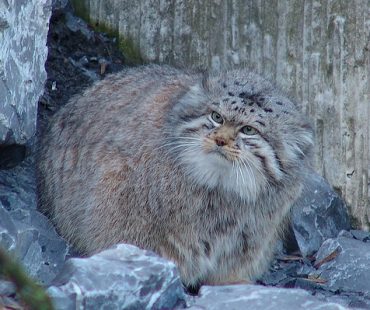
A research group, which is stationed in Firouzkouh, Tehran Province, for the last six months, is cooperating with the Firouzkouh Department of the Environment in studying whether Pallas cat exists in the region.
Head of Firouzkouh Department of the Environment Mohammad Faridi added that the region is a no-hunting zone. It is an important region in central Alborz in the east of Tehran Province, he noted.
He said studies have been underway since last winter, adding camera traps have been installed in the area.
In addition to monitoring Pallas cat in Firouzkouh, the camera traps took pictures of a leopard in the area, he added.
Given the existence of fauna species such as leopard and Pallas cat in the region, he said, a special guard is constantly controlling and supervising the security of this natural region.
Pallas cat ― with scientific name ‘Otocolobus manul’ ― is one of eight living wild felines in Iran. Little information is available on the population and its frequency across the country.
Pallas cat has a wide but fragmented distribution in the grasslands and montane steppe of Central Asia. Their low number is believed to be the outcome of predation restricting such habitats for those with good cover from predators, whilst providing easy access to prey.
Pallas cats are dependent on marmot burrows or other available cavities to provide dens for daily use and rearing young, which further restricts habitat availability.
Firouzkouh is in the northeastern region of Tehran Province. It is located in the middle of Alborz Mountains.
Firouzkouh is located 150km from Tehran. It is also situated 105km from Pol-e Sefid, Mazandaran Province and 70km from Semnan. In addition, Tehran-Gorgan Railways traverses Firouzkouh.
The city boasts relatively cool and windy climate.
Finland President in Tehran+Photo

The Finnish president arrived in the Iranian capital on Tuesday heading a political and economic delegation for talks with top-ranking Iranian officials.
Sauli Niinistö was accorded warm welcome by his Iranian counterpart Hassan Rouhani at Tehran’s Sa’dabad cultural and historical complex on Wednesday 26 October 2016.
The two presidents discussed issues of mutual interest, as well as multilateral issues and expansion of bilateral economic relations.
The Finnish president also met with Supreme Leader of the Islamic Revolution Ayatollah Seyyed Ali Khamenei, Ayatollah Hashemi Rafsanjani Chairman of the Assembly of Expert and Majlis (parliament) Speaker Ali Larijani.
Tehran-Berlin ties in the spotlight
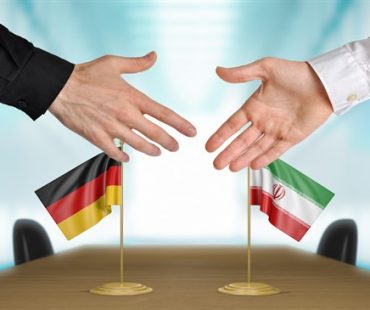
Iran and Germany have maintained close commercial ties for decades. However, with the imposition of anti-Iran sanctions, China and several other countries to overtook Germany in the Iranian market.
The lifting of sanctions in January 2016 which followed last year’s nuclear deal between Tehran and the major world powers provided a much-needed fillip for the Germans to reclaim their major role in Iran’s market.
The trip by a German delegation led by Economy Minister Sigmar Gabriel to Tehran showed that the European nation is seeking to expand ties with Iran.
This was Gabriel’s second visit to Tehran since the Islamic Republic and the P5+1 (the US, Britain, Russia, France, China plus Germany) reached the nuclear deal in July 2015.
Major German firms and its banking sector signed deals with their Iranian counterparts during the visit.
The presence of the German delegation echoed the message that one of the world’s largest economies has resumed trade and economic ties with Iran.
Nowadays, with insecurity prevalent in most parts of the Middle East, Iran is among the few nations that has provided high security for its people and foreigners. This is not only drawing German investors to Iran but also all economic institutions across the globe.
Last year, Tehran-Berlin trade reached €2.5 billion indicating an increase following years of stiff sanctions. It is estimated that the figure will reach €5 billion in the short-term and €10 billion in the long-term.
Iran mainly exports raw materials to Germany. Hence comprehensive planning is required to pave the ground for exporting manufactured goods to Europe’s largest and strongest economy. The private sector can play a major role in this.
German and Iranian private sectors held a meeting during the German delegation’s visit to Tehran. This indicated the government’s desire to have the private sector assume a more significant role in bilateral trade ties.
To sum up, the revival of Tehran-Berlin ties will benefit both parties. It is obvious that the two sides are making efforts to boost bilateral ties./ Iran Daily
Thai Airways ‘s plane landed in Tehran +photo
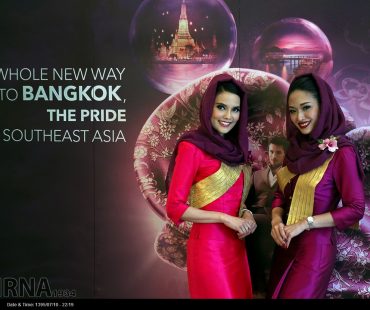
Thai Airways announced a new flight between Bangkok and Tehran started from 10th October .
The first flights of the Thai Airways as the fifty-sixth international airline landed at the international airport of Imam Khomeini (RA) on 7 pm.
Perrin Yvprasrt Thai Airways regional manager in this ceremony said: In the first phase, the Thai Airways’s flights come from Thailand to Tehran and the next steps flights to Mashhad and Isfahan in Iran and the Phuket in Thailand will be established.
Asian rock climbing championships held in Tehran+Photo
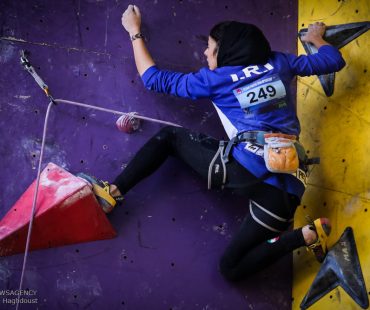
Asian rock climbing Youth championships held on 26-30 September 2016 in Tehran, Iran.
All ACC countries can participate in this event.
It is predicted that 200 youths will attend in this event which is categorized in Youth A, Youth B, and Youth C.
This competition will be held in Lead, Speed, Boulder, and Overall categories.

Asian rock climbing competitions kicked off on Wednesday in Tehran with participants from Japan, South Korea, China, Malaysia and Singapore.
